Mechanical Perfection. That’s what the MP abbreviation means according to Leica. Is the MP labeling just marketing, or is there some truth to it? Is it really mechanical perfection?
For about a year now, I’ve been using the Leica MP as my go-to camera. During that year I’ve shot about 120 rolls of film. That’s not a lot for a year, but I’ve also been using a Leica M240, Fujifilm X100T, Sony RX100M3 and a Hasselblad 501cm during that year. But my primary go-to camera for shooting has always been the MP, simply because it’s my most inspiring and fun to use camera.
The MP I have is a standard production model in black paint. I purchased mine as a demo-model, but it had never been used. It had only been showcased in a glass shelf at a photography exhibition and then it was put straight back into its retail box. This saved me about $1000 off the new price! I purchased mine from Ken Hansen in NYC. He often has good Leica deals available. I recommend checking with him if you’re looking for new or old Leica gear.
This is a camera that I’m most probably never gonna sell. It’s just so inspiring to shoot with, even though I quite often dread the thought of developing and scanning film. Film development, scanning and post-processing (cloning out dust and scratches) takes an awful amount of time. And quite often I just want to go back to my digital workflow and forget about film photography. But then I look at the images that I’ve made on film – all made 100% by myself, including the choice of film, the chemicals used for development, the scanner, the scanning technique and post-processing, and then – I quickly remember why I love film photography as much as I do.
Film photography is ever-lasting. The medium is physical. The negatives can be touched. The chemicals smell. The scanner makes a certain robotic “hum” while it’s doing its job. It’s a very meticulous process – from start to finish. You, as the photographer, are completely involved in the entire process. Working with film isn’t just clicking the shutter and adjusting a few sliders in a software. It’s so much more.
Film images seem to come alive due to the process involved in everything from making the image and finalizing the image. I personally can’t compare digital photography to analog photography. The mediums, the workflow, and the process are so different that they can’t be compared. They are completely different, even though you always end up with a final image.
Digital photography is easy. Yes, easy! It truly is. I feel that very few of my digital captures are worth anything for me personally. But my film creations however, they’re worth a lot more. Why? Simply because of the process of creating something physical. My film negatives are physical. I can always go back to them and re-scan them, or even print them in the darkroom. They’re precious. I really care about the negatives. My digital images reside on a hard drive, or on several hard drives, and on a couple of backup hard drives and in the cloud. They’re not physical. They’re just there. Do I care about them? Not really – I always have a backup. Do I print most of my digital images? Nope – very rarely. Maybe I should.

The Leica MP is a wonderful tool to create images with. It’s basically a solid piece of metal, which consists of brass for the most part. It has a wonderfully big and bright viewfinder, which are not very prone to flare. Compared to the M240 though, the MP finder can sometimes flare, but very seldom. The M240 finder never flares – period. So there is some improvement in the latest generation finders, even compared to the MP finder. The mechanics of the camera feels so right. Everything is smooth and wonderful to touch. The film rewind lever is an absolute joy to use. The shutter has just the right amount of resistance and responsiveness. It feels solid. It will likely outlast me if I take care of it.
The cloth shutter sounds fantastic, and at the same time it’s very, very quiet. It sounds very different to the shutter in the M240, but, in sound volume I would say they are about the same. After receiving my MP I immediately noticed that the shutter wasn’t more silent than the M240’s shutter. The sound volume is about the same, but the sound is just very different. Regardless, the MP is a very quiet camera compared to most.
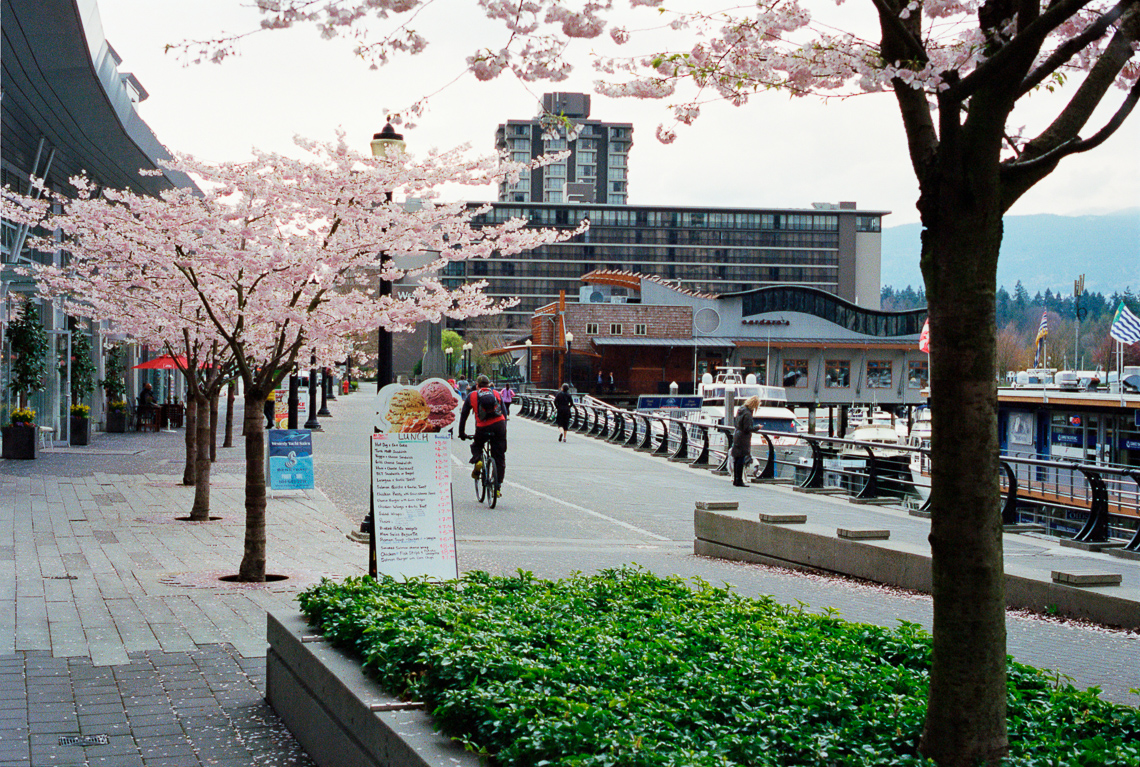
I find that the MP’s light-meter works much in the same way as the M240’s light meter. Which means that it typically under-exposes if you’re making a landscape shot with a horizon somewhat in the middle of the frame. In these situations I find it always better to expose for the shadows, or to simply just over-expose by about one stop according to what the meter thinks is correct. Film can take a lot of over-exposure and still look great, but you never want to under-expose film. Under-exposing film creates murky, foggy and very grainy images.
When shot in portrait mode however, the meter tends to over-expose between 1/2 to 1 stop – unless you meter specifically for the highlights and re-compose. This is exactly the same way as the M240 behaves – the big difference being that film handles over-exposure perfectly fine – over-exposing film can even look better in many cases, especially with modern C41 emulsions like Kodak Portra or Fujifilm Pro 400h. Digital images are destroyed if over-exposed. Those highlights are gone, and you get those white funky looking blobs.
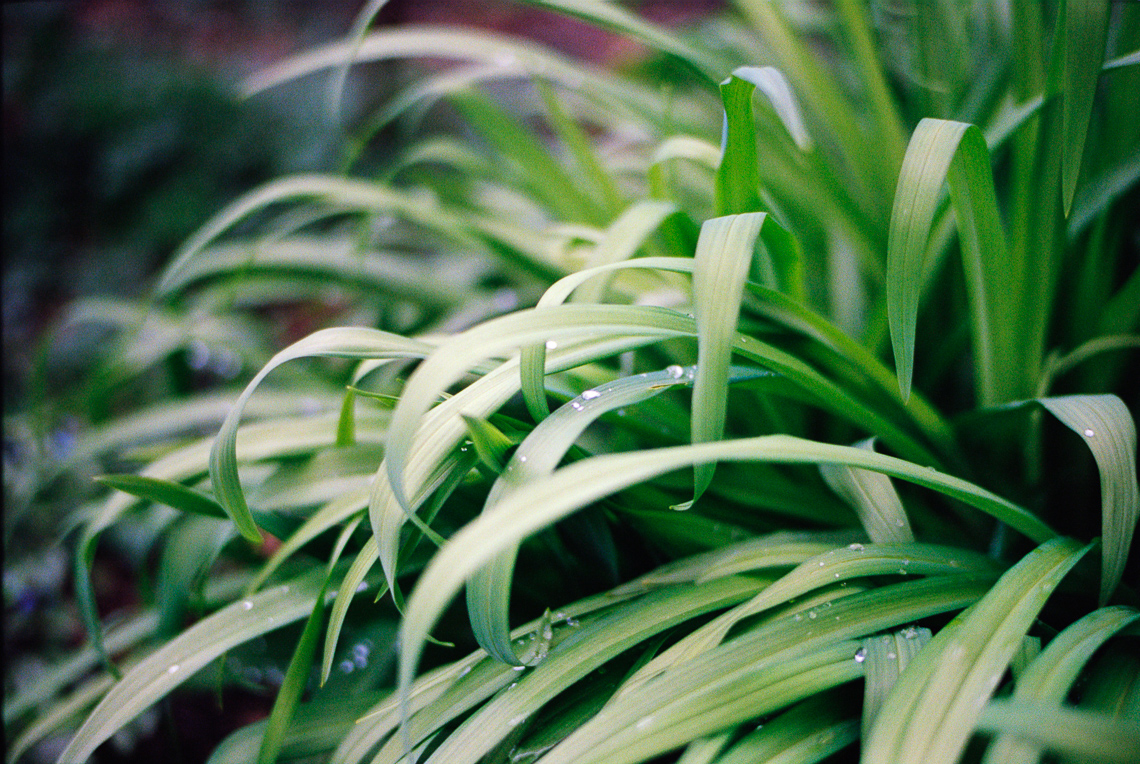
The Leica MP is one of the easiest cameras to shoot with if you use film with a good amount of exposure latitude. From my experience these films has great exposure latitude: Kodak Portra 400, Ektar 100, Tri-X 400 and Tmax 400. Fujifilm Pro 400h, Superia 200, Acros 100 – and Ilford HP5+ 400. Just meter your scene, set your exposure and forget about meter until the light changes a lot, then re-meter and set your exposure. I would not advice anyone to look at the meter from frame to frame and doing micro-adjustments all the time based on what the meter says – unless the light has changed a lot (from sunny to shady or vice versa).
There’s really not much to say about the Leica MP. It’s a purely mechanical camera with a built-in electronic light-meter. The light-meter relies on one (or two) smaller batteries, that usually last for 6-12 months depending on how much the camera is used. If you don’t want to use the light-meter you can simply remove the battery and shoot the camera meter-less. Nothing besides the light-meter requires batteries, so everything still works perfectly fine when the batteries are either dead or removed. The only thing you need is some film and a lens, and some basic understanding of light (The Sunny 16 rule).
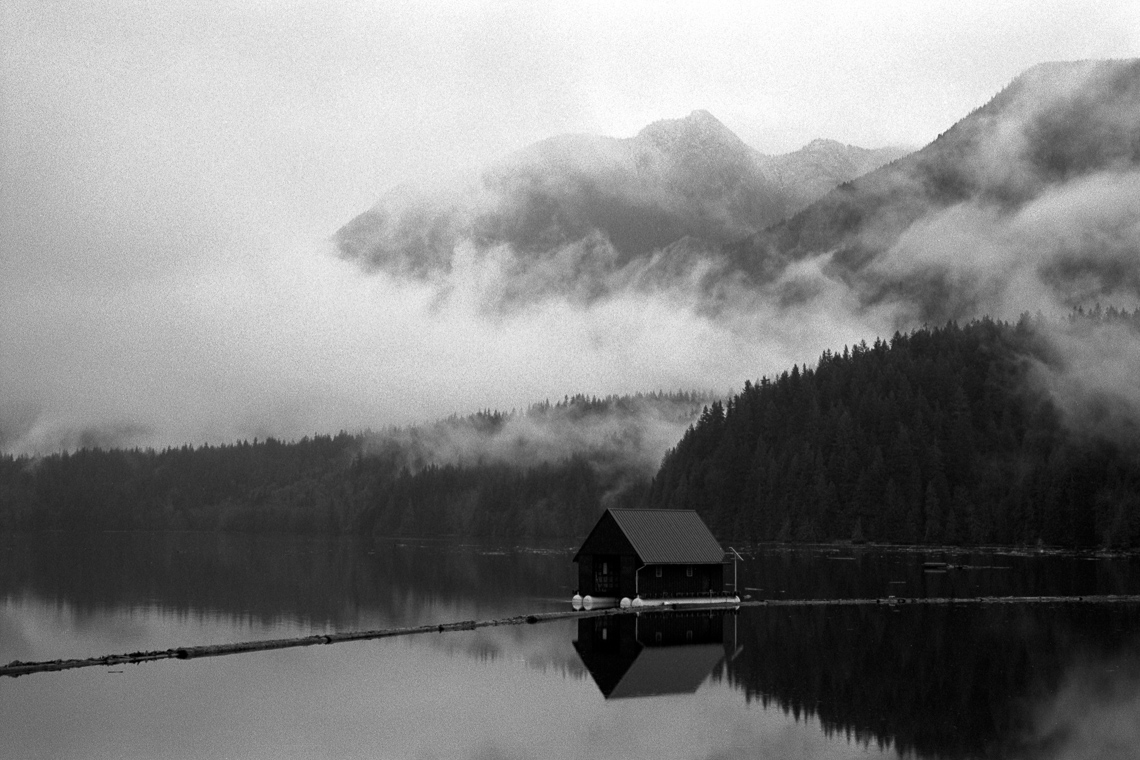
In my opinion the Leica MP is the simplest camera to load film in. I’ve loaded my camera with about 120 rolls of film now, and I never check if the film is aligned on the sprockets or not. I just stretch the film out from its canister for approx. the length that I need, pop the roll in the camera, put the film leader between the slots in the take-up spool, put the base plate back on, wind the camera, make a frame, wind again, make a frame, tighten the film rewind knob until I feel some resistance, and then wind it again while looking at the two red dots on the rewind knob to ensure that the film is actually winding. Now I’m ready to shoot, and the frame counter is on frame 1. The camera has never failed me so I’ve just learned to trust it, but I always watch those two red dots on the film rewind knob to make sure.
If you want an all mechanical film Leica without a meter however, there is also the Leica M-A. It’s basically a Leica MP without the meter and no other changes, except that you can’t get the Leica M-A in the black paint finish. They both cost about the same new, and I would rather just go with the MP. And if you really don’t want to use the meter, then just remove the batteries. At least you have the ability to use a meter when and if you need to in the future. External meters aren’t fun to use.

The big difference between the silver chrome and black paint model, besides the looks, is the feel. They feel very different in the hand. The black paint camera is a lot more grippy. It kind of sticks to your hands, and is more reassuring to hold. It also tends to feel warmer to hold in the wintertime. The silver chrome finish is slippery compared to the black paint finish. It slides in the hands, whereas black paint sticks in the hand. The big advantage of the silver chrome finish is that it’s extremely durable. To scratch it you really have to go to work on it. It won’t brass, unless you’ve used it every day for decades. With normal use it’ll still look new after decades of use!
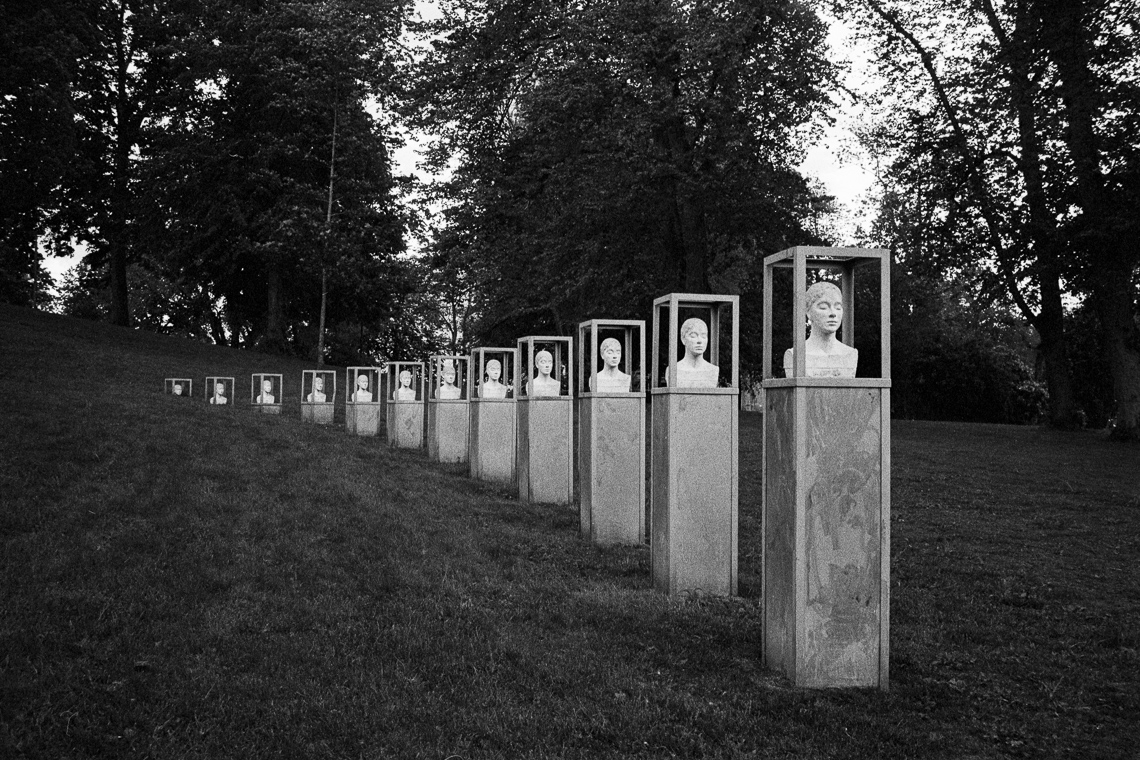
I sometimes wish I got the silver chrome model myself. But then I change my mind, because I also really love the way the black paint model looks and feels. I love them both just as much. The silver model looks more classy, and it suits both black and silver lenses perfectly. The black paint model doesn’t really look good with silver lenses on, so the silver model is more universal in that regard. The silver model does get a lot of attention however, and the black paint model blends in and doesn’t really get a lot of attention. There are pros and cons to both models, and I love them both just as much. I guess in the perfect world I would have had both for myself. Who knows, a CLA’ed M3 Single Stroke might show up in my hands some time in the future and cure my need for a silver chrome camera.
If you want a camera that lasts for decades without breaking a sweat, and you want to shoot film, then I can’t think of a better camera than the Leica MP. An M6 comes close, and can be bought 2nd hand for a lot less money, however – and they’re both just as capable to make images. Remember – the camera matters less when shooting film. It’s all on you, the lens, and the film. The camera is just the tool that interconnects these parts, and enables you to expose the film emulsion to light. The signature in the image is created by your vision, timing, the film emulsion of your choice, the chemicals the film is developed with and how you decide to scan and process your scans.
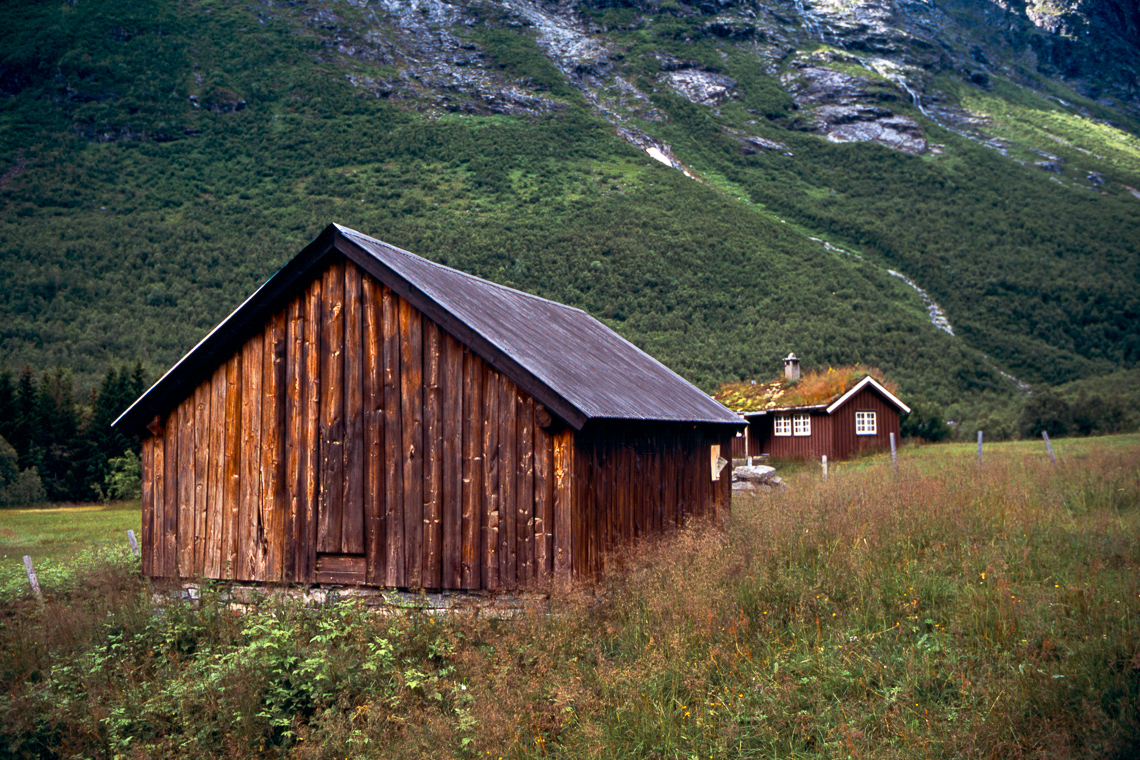
For me personally, I just wanted the MP. The MP was the camera I really truly wanted. I didn’t want the M6 as much. So that’s why I got the MP. I could have made exactly the same images with a used and serviced M6 or M4-P, for example. But I’m not sure if the M6 would inspire me as much to go out and make images with it.
To conclude – yes, I do think the camera is Mechanical Perfection. There’s actually some substance to Leica’s marketing decision to brand the camera as such. I’ve personally never held or used a camera that leaves such a solid impression, and I guess that says it all.
If you’re interested in purchasing a new or used Leica MP, Amazon usually has a few good deals on both new and used one’s. You can find some options here:
Leica MP Black Paint 0.72x viewfinder
Leica MP Silver Chrome 0.72x viewfinder
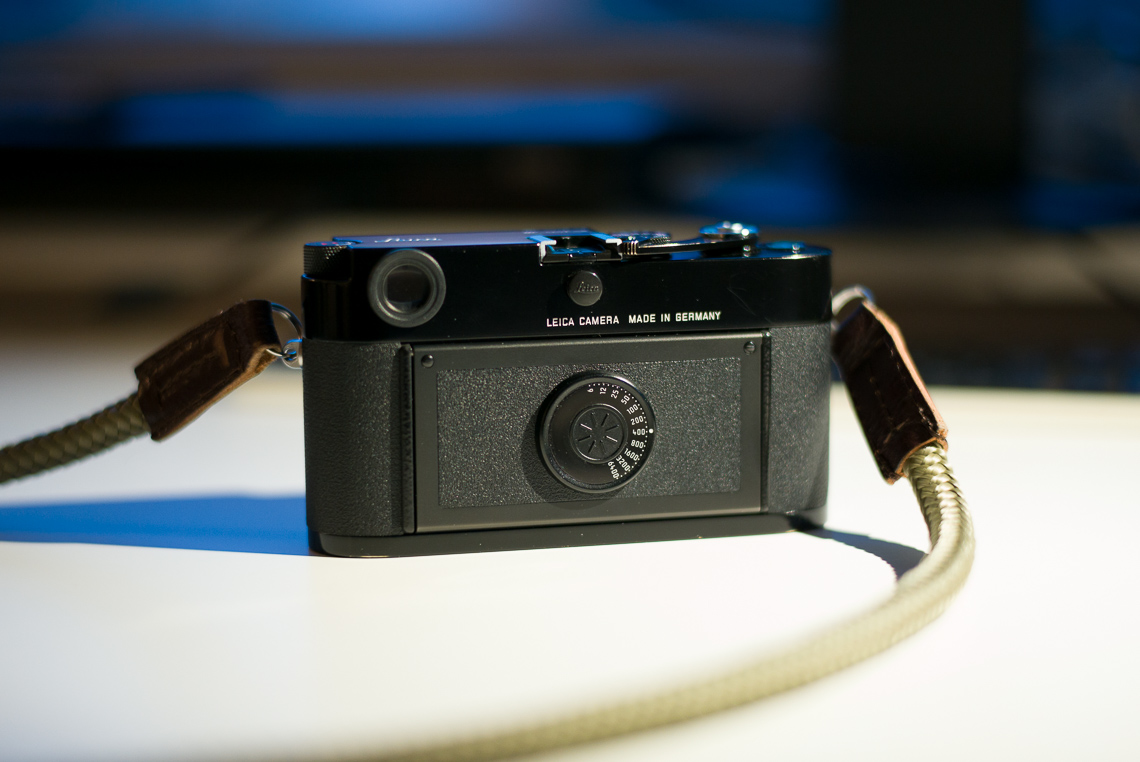
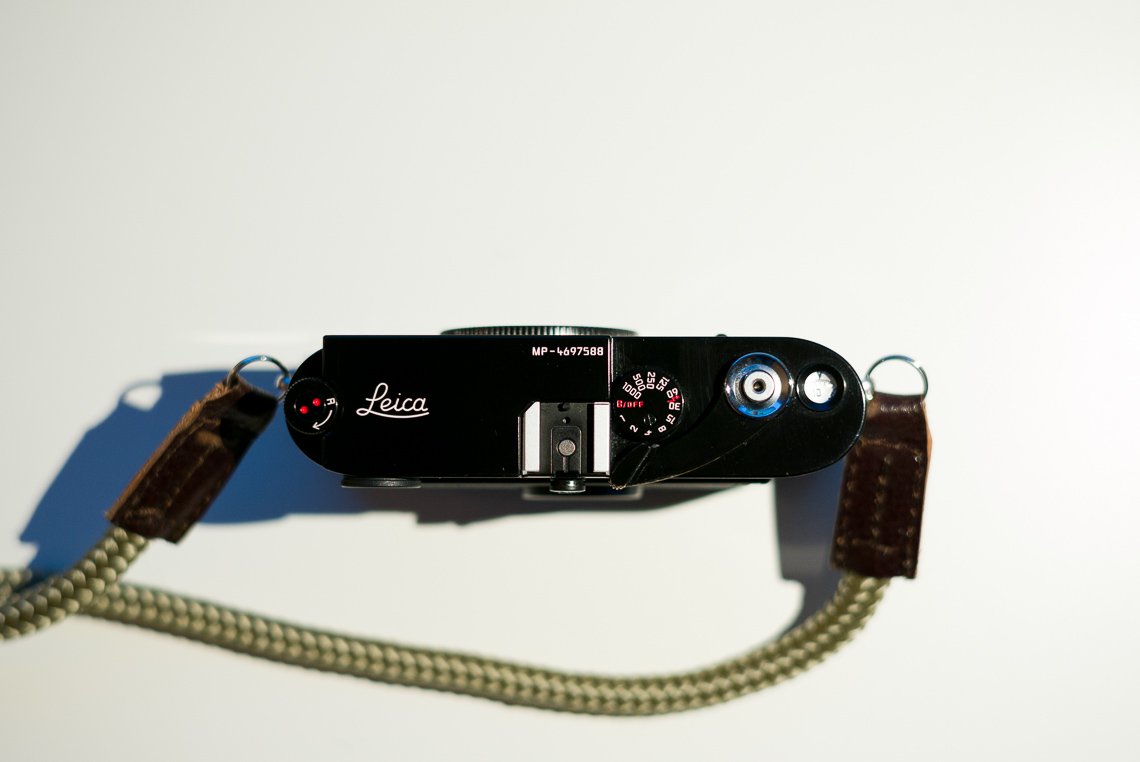
26 Comments
Join the discussion and tell us your opinion.
Thanks for writing a review in 2016 on this camera. I’ve been using my black paint MP for about 5 years and it is the best shooting experience I get from any camera. Mine has also started brassing and the paint has chipped in a few spots. I love that it mirrors the amount of abuse and use I’ve put it through. I’d also love to get a silver MP or and M2 to compliment. They’d just look wonderful sitting on the shelf.
I currently has just the MP with a 50 Lux Asph. My backup camera is a Contax T3. The Contax is good to hand to the wife to take a photo of me. She’s a left eye shooter and has difficulty focusing with the MP.
Great review and thanks again!
Asim
Thanks for your comment Asim. I’m glad you enjoyed the article.
Congratulations on owning and using the MP for five years! It sounds like it has served you well.
I’m also considering an M2. I would love an M3, but I also frequently shoot with a 35mm lens, which would be a bit cumbersome without the 35mm framelines on the M3. I’ve heard good things about the Contax T3 🙂 I’ll have to check it out one day.
Borge
By the way… this is the first time in my life that I’ve commented on anyone’s blog. Again… great review.
I had an M3 for a week and found that it is fine to use with a 35mm as long as you use an external finder. If you primarily use a 50mm, the M3 is the best. For the occasional 35mm or 28mm photo you can use an external finder. But at the same time, you could get the basically the same view with an MP with a .85 viewfinder… and you’d have the luxury of the 35mm framelines in the viewfinder.
I only returned the Leica M3 because my wife convinced (ordered) me to. She was right in saying that I don’t shoot enough to merit two Leicas. That’s how I ended up with the Contax T3. Which is a great camera because I can take it with me on the days when I really just want to relax with my photography… you know those days when you have to give your wife and kids more attention! 🙂 Also, when I go on a bicycle tour I only take the Contax T3 with me. It takes no space and still produces stunning images.
I shoot ONLY slide film. I don’t shoot black and white or even digital. My wife’s got all the digital stuff covered. I watch her in front of the computer trying to figure things out and only think to myself that slide film photography is much more convenient and enjoyable. Also, when I project an image with my Leica P600 projector, I can see that she wishes her photos had as much clarity.
Thanks again for the review
Thanks or the post. A lot of good info. I have owned the M a few years and haven’t shot much with it because I don’t know what I need to develop the film. Do you have a list of the supplied we’d all need to develop the film in our bathroom. Maybe a link to purchase the supplies?
Hello Glen. You should use your M more often! Get out there 🙂
I might make a future article about film development at home. There are so many different types of chemicals to choose from, but I personally use Kodak HC110 as a developer and Ilford’s stop and fixer, and that’s about it.
Hi Børge,
Great article, and beautiful photos! It is nice to see that there is someone else out there who would still rather pick up a film camera! I always enjoy seeing your work.
Best regards,
Mark
Thanks Mark. Film is very inspirational. What I like best about it is the deliberate action about using film: deciding on a look/film before photographing, rather than after (in Lightroom).
Thank you for taking out time for such honest and amazing write up! Must have helped many.
Hello Tim. My pleasure. I hope so 🙂
Thanks Borge, nice review.
I purchased my first M (2nd hand M7 0.85) about 5years ago and love it.
But I’ve now been waiting for 8 weeks for delivery of a brand new a-la-carte MP 0.85 with no scripting at all …. can’t wait to use with my 35mm Summilux, 50mm Zeiss f1.5 and 90mm Cron. May have to wait another 4 weeks!
Congratulations on your purchase. The MP is such a wonderful classic already.
You comment about dreading the development and scanning process sounds very familiar. Hence a few recommendations.
A fews years ago I was struggling with the scanning issue. I felt I was spending too much time fiddling with the film scanner, trying to get that organic tri-x look. But instead of working with the photographs most of my time went into Lightrooming dust and scratches. Scratches were sometimes impossible to remove without messing up the beautiful film grain…
Eventually I built my own little bathroom-darkroom and made my first wet print. The moment I saw my first wet print I knew I would never touch the film scanner again. My first prints were practically dust free and the grain structure of the film had that organic look that my 4000dpi scanner was never able to reach. The look of the deep and neutral silver gelatin black is stunning. Contrast filters allow you to control the “hardness” of the film grain beautifully.
I realized that most of the scratches in my films had come from touching the emulsion at various steps. First when wiping the film before drying, then storing strips in plastic sleeves and then finally when sliding them into the glass holder of the scanner. I started using distilled (purified) water and Ilfotol for drying films without touching, I started storing films in archival film strip envelopes (no sliding emulsion against anything) and finally removing dust with an anti-static brush before enlarging. Now my films strips are absolutely free of scratches and prints rarely show any dust (sometimes one spec which I then brush off for the next print or spot later).
Another thing that I realized, that may be important for you to know, is that the film development and darkroom work go hand-in-hand. For a certain look you need to shoot, develop and enlarge in a certain way. In general I have not been able to get the best dakroom prints from films I developed when I was scanning films since I did not develop for a certain look. It way not be possible (or easy) to re-visit negatives in a darkroom if you have handles and developed them with the scanning workflow in mind.
The darkroom really brings the best out of b&w film and the MP. Do try.
Hello Mikael. Thanks for your comment. I’m really interested in trying out darkroom development and enlargement myself, but at this point in life I sadly have no time or space to do it in. It’s on my bucket list however… I might see if I can find a darkroom facility to rent for a few hours here and there locally to try it out.
“Go to”…”go to”. For fuck sake. If ever there is a more over-used modern phrase it has to be fucking “go to”. I stopped reading after the second “go to”.
@GoTo That’s hilarious!! “Go to” is my go-to phrase to piss off my Dad who drummed grammar and English expression into my from a young age. “Go to” and “big time”. I’m still laughing!!
Interesting that you wrote this is a camera you’re probably never going to sell, and then I see this very camera sell on Finn.no a few days ago. May I ask what made you change your mind, Børge?
I have several MP’s. One of them was supposed to be sold, but it wasn’t.
Hi Børge,
Thanks very much for such a comprehensive review of the MP. I’ve been trying to decide between an MP and M-A for a while now. I’m leaning towards the MP because I really like the black paint finish, although the plastic ISO dial on the back is not a very elegant solution. Anyway, I enjoyed reading about your deliberations and experience with the MP. I’m experiencing MP ownership vicariously at the moment.
Thanks again!!
Peter
Hi Peter!
Both the MP and M-A are fantastic cameras. For me, personally, I like the fact that I have a light-meter if I feel lazy. The removal of the light-meter in the M-A didn’t really make a difference in my shooting style. Just had to use the phone as a light-meter more frequently 🙂
The nice part of the MP is when it brasses and wears in over time. It becomes a personal object. The M-A doesn’t wear-in in the same way.
Good luck with your decision 🙂
Hi Børge,
I thought I’d give you an update… 🙂 I no longer need to live vicariously through Leica MP owners like you who generously share their experiences online. I just bought a brand-spanking-new MP and 35 summicron…which may arrive sometime before October. It’s going to be a long wait, but no doubt worth it in the end.
Thanks again for the review!!
Peter
Congrats! That’s a great setup it’s the combination I’m using 90% of the time myself.
Hi Peter! Congratulations on your purchase. The MP + 35 Cron is my preferred combo nowadays also. It’s what I use 90% of the time, and I couldn’t be happier. Let me know how it goes!
Børge,
thanks for your review! I bought a black paint MP last year, and always think that buying this camera is a SUPER wise decision 🙂
Anyway, my MP is the a la carte model without the word “Leica” on top, since I wanted to engrave my name rather, and it works! Just costs 300 Euro, quoted from Leica. You may engrave your name at the right hand side to the viewfinder too.
I will keep the camera for LIFE, happy 🙂
Here is the photo:
https://www.dropbox.com/s/ja5t5ipxuwyewr4/DSC00703_022.jpg?dl=0
Cheers,
Jason
Børge,
thanks for your review! I bought a black paint MP last year, and always think that buying this camera is a SUPER wise decision 🙂
Anyway, my MP is the a la carte model without the word “Leica” on top, since I wanted to engrave my name rather, and it works! Just costs 300 Euro, quoted from Leica. You may engrave your name at the right hand side to the viewfinder too.
I will keep the camera for LIFE, happy 🙂
Here is the photo:
https://www.dropbox.com/s/ja5t5ipxuwyewr4/DSC00703_022.jpg?dl=0
Cheers,
Jason
Hey Jason. I’m glad you liked the review. And congratulations on your A La Carte model! It’s a true beauty.